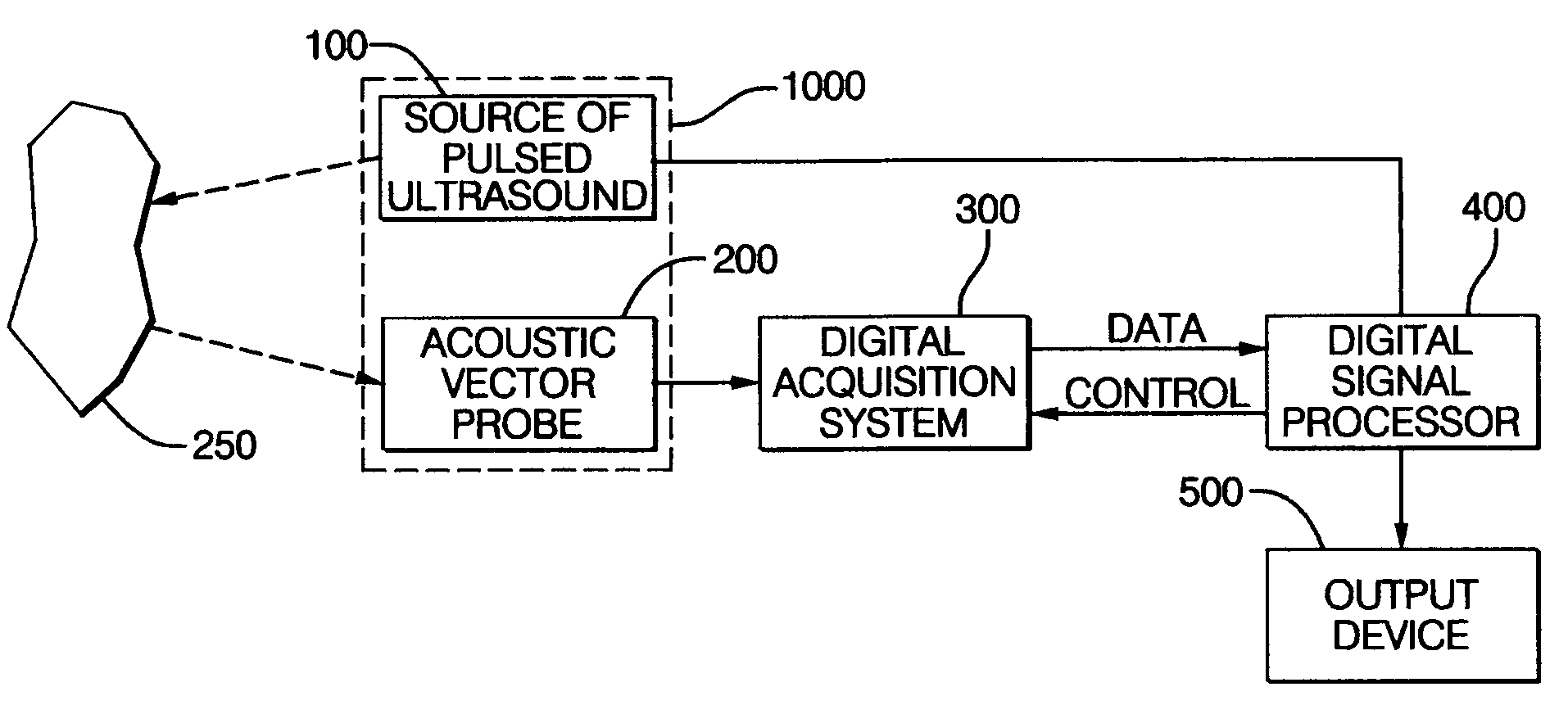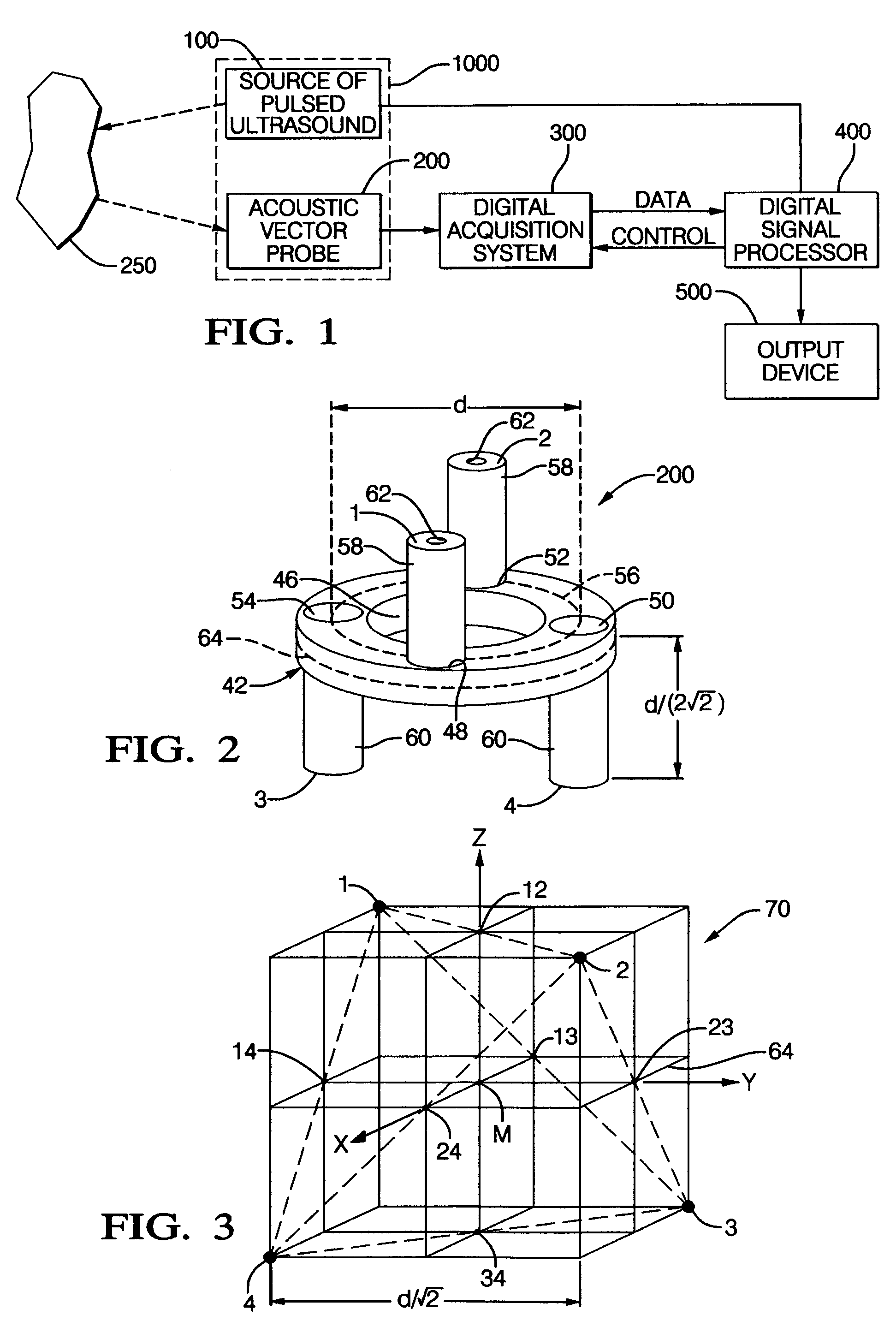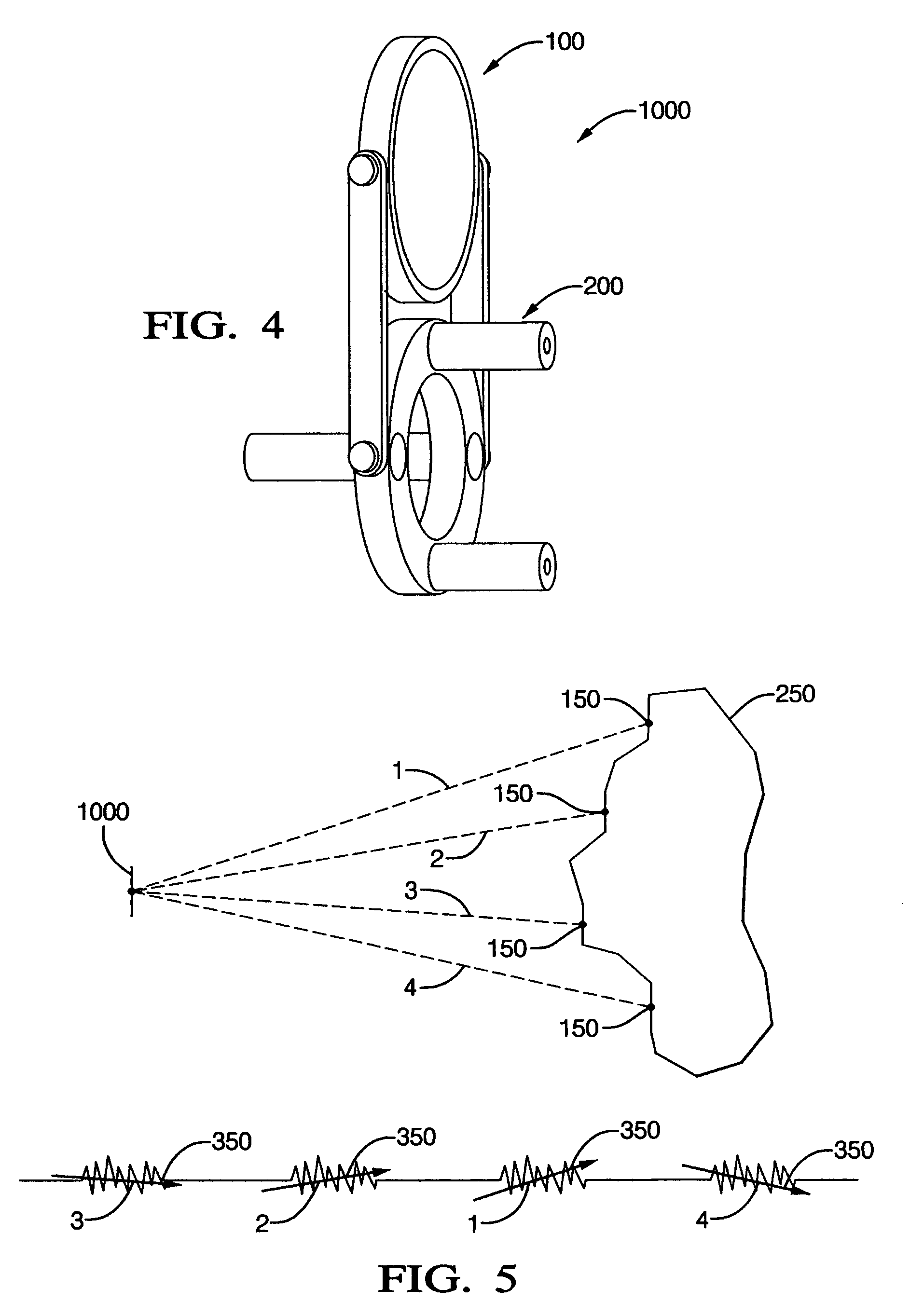Method and apparatus for echolocation
a technology of echolocation and echolocation, applied in the direction of instruments, measurement devices, and using reradiation, can solve the problems of bats not being able to distinguish individual objects with so wide a beam, and receiving echoes from ahead of the transducer, and achieve the effect of accurate determination of the sound intensity vector
- Summary
- Abstract
- Description
- Claims
- Application Information
AI Technical Summary
Benefits of technology
Problems solved by technology
Method used
Image
Examples
Embodiment Construction
[0044]FIG. 1 is a block diagram showing the different components of the invention. A source of pulsed ultrasound 100 is combined with an acoustic vector probe (AVP) 200 to form an echolocation instrument 1000 linked to a data acquisition system 300, a digital signal processor 400 and a display unit 500. The processor controls the source 100 and the data acquisition system 300. Backscattered echoes to the pulses from the source 100 are returned by an object 250 to the probe 200.
[0045]FIGS. 2 and 3 illustrate the structure and function of the AVP 200 in determining the sound-intensity vector. AVP 200 includes a fixture 42 being an annular member formed as a ring with a central opening 46. Protruding from the ring are four support tubes for the microphones parallel to the axis of the ring, two on one side of the ring pointing in one direction and two on the reverse side pointing in the opposite direction. These tubes are spaced around the ring at ninety degree intervals at openings in ...
PUM
 Login to View More
Login to View More Abstract
Description
Claims
Application Information
 Login to View More
Login to View More - R&D
- Intellectual Property
- Life Sciences
- Materials
- Tech Scout
- Unparalleled Data Quality
- Higher Quality Content
- 60% Fewer Hallucinations
Browse by: Latest US Patents, China's latest patents, Technical Efficacy Thesaurus, Application Domain, Technology Topic, Popular Technical Reports.
© 2025 PatSnap. All rights reserved.Legal|Privacy policy|Modern Slavery Act Transparency Statement|Sitemap|About US| Contact US: help@patsnap.com



